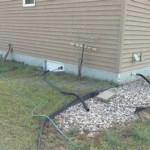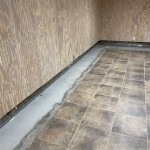How To Get Rid Of Large Spiders In Your Basement: A Comprehensive Guide
The discovery of large spiders in a basement can be unsettling. Basements often provide an ideal environment for these arachnids due to their cool, dark, and damp conditions. Furthermore, basements frequently serve as storage spaces, accumulating clutter that provides hiding places and potential food sources for spiders and their prey. This article details a comprehensive approach to managing and eliminating large spider infestations within a basement setting, drawing upon various pest control methodologies and preventative strategies. While the mention of "Taiwanese movie" is included in the prompt, it seems irrelevant to practical pest control. Therefore, this guide focuses on evidence-based methods for spider management.
Effective spider control requires a multi-faceted strategy encompassing environmental modification, targeted treatment, and ongoing preventative measures. The identification of the spider species present is beneficial but not always necessary for implementing general control strategies. Most large spiders found in basements are harmless, albeit intimidating in appearance. However, some species, like the brown recluse (though less common than feared), possess venom that necessitates caution. Regardless of species, a proactive approach to minimizing their presence is advisable.
Sanitation and Habitat Modification
The first and arguably most crucial step in spider control is thorough sanitation and habitat modification within the basement. This involves eliminating the conditions that attract and sustain spider populations. Spiders are attracted to areas with an abundance of insects, their primary food source. Therefore, reducing the insect population within the basement will, in turn, reduce the spider population.
Begin by removing clutter. Cardboard boxes, stacks of newspapers, old clothing, and stored items provide excellent hiding places for spiders and other pests. Replace cardboard boxes with plastic storage containers with tight-fitting lids. These containers not only deny spiders harborage but also protect stored items from moisture and other potential damage. Regularly inspect and clean storage areas to remove spider webs and egg sacs. Vacuuming or sweeping these areas is effective in removing these items.
Addressing moisture issues is also paramount. Spiders, like many other pests, are attracted to damp environments. Repair any leaking pipes or faucets. Ensure proper ventilation within the basement. A dehumidifier can be used to reduce humidity levels and create a less hospitable environment for spiders and their prey. Consider installing a vapor barrier on the basement floor if moisture is a persistent problem. This barrier will prevent moisture from seeping up through the concrete, further reducing humidity levels.
Seal any cracks or crevices in the walls and foundation. These openings provide entry points for spiders and other pests. Use caulk or other appropriate sealant to close off these potential access points. Pay particular attention to areas around pipes, windows, and door frames. Window wells can also be a common entry point for spiders. Ensure that window wells are clean and free of debris, and consider covering them with mesh screens to prevent spiders and insects from entering.
Outdoor maintenance plays a role as well. Trim vegetation away from the foundation of the house. Overhanging branches and dense vegetation can provide a bridge for spiders to enter the basement. Remove leaf litter and other debris from around the foundation, as these materials can harbor spiders and other pests. Ensure that gutters are clean and functioning properly to prevent water from accumulating around the foundation.
Targeted Treatment with Insecticides
While sanitation and habitat modification are essential for long-term spider control, targeted treatment with insecticides can provide immediate relief and help to reduce existing spider populations. When using insecticides, it is crucial to follow the manufacturer's instructions carefully and to prioritize safety. Always wear appropriate protective gear, such as gloves and a mask, and ensure adequate ventilation during application. Consider professional pest control services, especially if the infestation is severe or if you are uncomfortable handling insecticides yourself.
Residual insecticides are effective for spider control. These insecticides leave a residue on surfaces that will kill spiders that come into contact with them. Apply residual insecticides to areas where spiders are likely to hide, such as cracks and crevices, along baseboards, and around windows and doors. Pyrethroids, such as permethrin, cypermethrin, and deltamethrin, are commonly used residual insecticides for spider control. These insecticides are effective against a wide range of pests, including spiders, and they have a relatively low toxicity to mammals when used according to the manufacturer's instructions.
Dust insecticides can be used in hard-to-reach areas, such as wall voids and attics. These dusts are typically made from diatomaceous earth or boric acid. Diatomaceous earth is a natural insecticide made from the fossilized remains of diatoms. It works by abrading the exoskeleton of insects, causing them to dehydrate and die. Boric acid is a synthetic insecticide that disrupts the metabolism of insects. Both diatomaceous earth and boric acid are relatively safe for humans and pets when used according to the manufacturer's instructions.
Spider sprays can be used to directly kill spiders on contact. These sprays typically contain pyrethrins or pyrethroids. When using spider sprays, be sure to aim directly at the spider and to avoid overspraying. It is important to note that spider sprays are only effective against spiders that are directly contacted by the spray. They do not leave a residual effect and will not prevent spiders from returning.
Consider using sticky traps or glue boards to monitor and trap spiders. These traps can be placed in areas where spiders are likely to travel, such as along walls and in corners. Sticky traps can provide valuable information about the types of spiders present and the extent of the infestation. They can also help to reduce the spider population. Check traps regularly and replace them as needed.
Preventative Measures and Long-Term Control
Once the initial spider infestation has been addressed, it is important to implement preventative measures to prevent future infestations. These measures should focus on maintaining a clean and dry basement, sealing entry points, and controlling insect populations.
Regularly clean the basement to remove spider webs and egg sacs. Vacuuming or sweeping is effective in removing these items. Pay particular attention to corners, crevices, and other areas where spiders are likely to hide. Continue to address moisture issues in the basement. Repair any leaks and ensure proper ventilation. Use a dehumidifier if necessary to maintain low humidity levels. Inspect the foundation of the house regularly for cracks and crevices. Seal any openings with caulk or other appropriate sealant. Trim vegetation away from the foundation of the house. Overhanging branches and dense vegetation can provide a bridge for spiders to enter the basement. Regularly inspect and maintain screens on windows and doors. Repair any tears or holes to prevent spiders and other pests from entering.
Focus on controlling the insect population in and around the house. Spiders are attracted to areas with an abundance of insects, their primary food source. Eliminate standing water, which can attract mosquitoes and other insects. Keep food stored properly in airtight containers to prevent attracting insects. Consider using outdoor lighting that does not attract insects. Yellow or sodium vapor lights are less attractive to insects than traditional incandescent or fluorescent lights. Applying a perimeter treatment of insecticide around the foundation of the house can help to prevent insects from entering. This treatment should be applied according to the manufacturer's instructions and should be reapplied periodically.
Consider natural spider repellents. Certain essential oils, such as peppermint, tea tree, and eucalyptus, are believed to repel spiders. Dilute a few drops of essential oil in water and spray it around the basement, paying particular attention to cracks and crevices. Chestnuts are also rumored to repel spiders. Place chestnuts around the basement to deter spiders. These methods are not scientifically proven to be highly effective, but they may provide some additional level of deterrence.
Ongoing monitoring is essential for long-term spider control. Regularly inspect the basement for signs of spider activity, such as webs, egg sacs, and live spiders. Check sticky traps regularly and replace them as needed. If you notice a resurgence of spider activity, take immediate action to address the problem. This may involve repeating the steps outlined above, such as cleaning the basement, sealing entry points, and applying insecticides.

10 Types Of House Spiders

10 Types Of House Spiders

10 Types Of House Spiders

Spider Identification Guide Pestnet Pest Leads Marketing

Spider Identification Guide Pestnet Pest Leads Marketing

10 Types Of House Spiders

10 Types Of House Spiders

Non Native Spiders Cause Problems

10 Types Of House Spiders

Spider Identification Guide Pestnet Pest Leads Marketing







